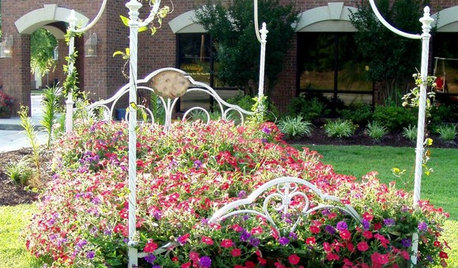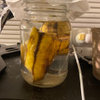Can I grow these from seed?
maryfaye_tx
14 years ago
Related Stories

CONTAINER GARDENS8 Easy Container Plants to Grow From Seed
Get beautiful blooms and herbs in summer by starting these choice garden picks from seed in spring
Full Story
GARDENING GUIDESHow to Plant a New Lawn From Seed
Choose from more grass varieties and save money over sod by starting your lawn from seed
Full Story
FALL GARDENING5 Fall Fruits You Can Grow in Containers
Brighten your porch or patio with a potted pomegranate, kumquat, blueberry bush or another great fall fruit
Full Story
GARDENING GUIDESYes, You Can Grow Food in a Shady Yard
Your shady garden doesn’t have to be forever barren. Berries, herbs and other shade-loving plants can produce a delicious bounty
Full Story
GARDENING GUIDESYes, You Can Grow an Edible Garden on a Hot, Dry Site
Difficult garden spots don’t need to deter you from planting trees, herbs and other delicious food plants
Full Story
GARDENING GUIDESSeeds or Seedlings? How to Get Your Garden Started
Growing delicious herbs and vegetables starts with knowing your goals and when you want to plant
Full Story
INSPIRING GARDENSWhat We Can Learn From Longwood Gardens’ New Meadow
Sustainability, ecology, native plant communities ... this public garden is brimming with lessons on horticulture for home gardeners
Full Story
CONTAINER GARDENSYes, You Can Grow a Plant In That
You can upcycle your old typewriter, paint cans, tires and many more things into places for your plants
Full Story
WINTER GARDENINGExtend Your Growing Season With a Cold Frame in the Garden
If the sun's shining, it might be time to sow seeds under glass to transplant or harvest
Full Story








insanlyinsane23
john_ny
Related Professionals
Manorville Landscape Architects & Landscape Designers · Forest City Landscape Architects & Landscape Designers · Ashburn Landscape Contractors · Fair Lawn Landscape Contractors · Fort Wayne Landscape Contractors · Lake Saint Louis Landscape Contractors · Mount Sinai Landscape Contractors · Pleasant Prairie Landscape Contractors · Seven Hills Landscape Contractors · Wanaque Landscape Contractors · Winchester Landscape Contractors · Cape Coral Roofing & Gutters · Buckhead Atlanta Roofing & Gutters · Lake Forest Roofing & Gutters · Robbinsdale Roofing & Gutterstropicallvr
garyz8bpnw